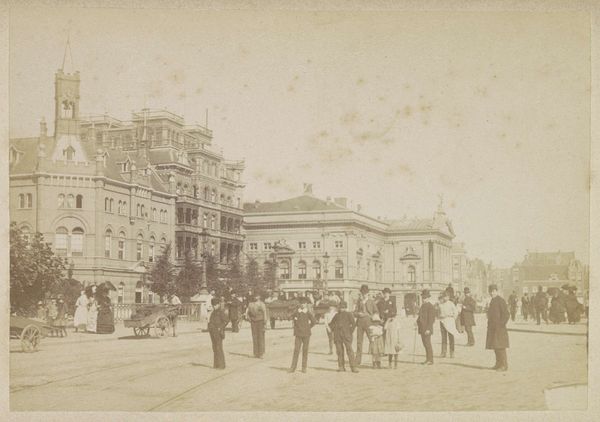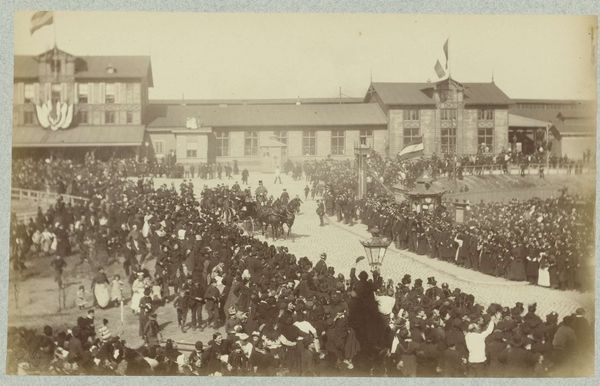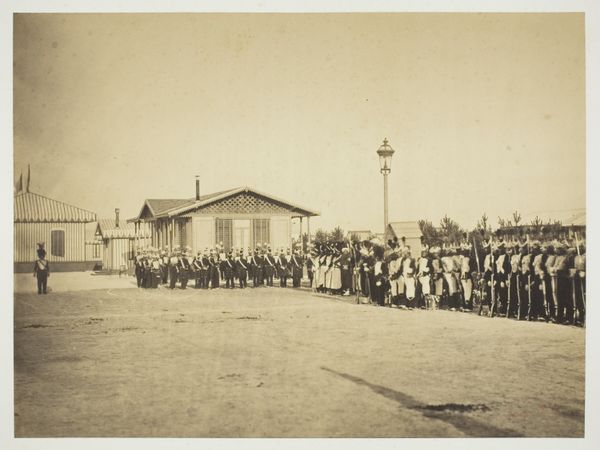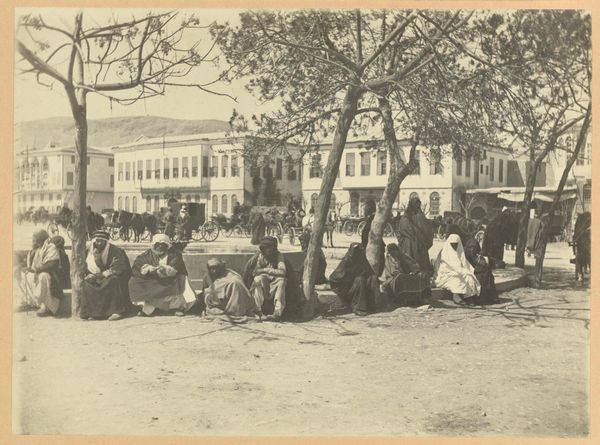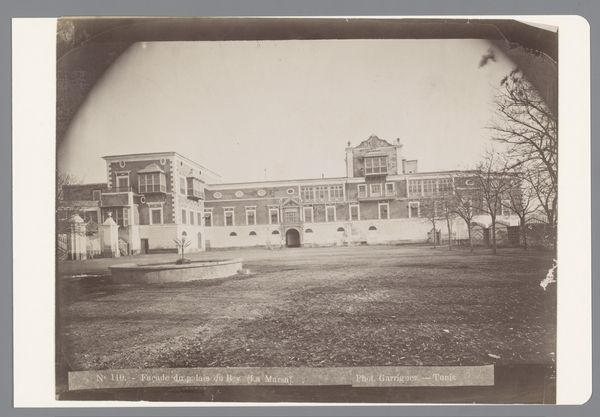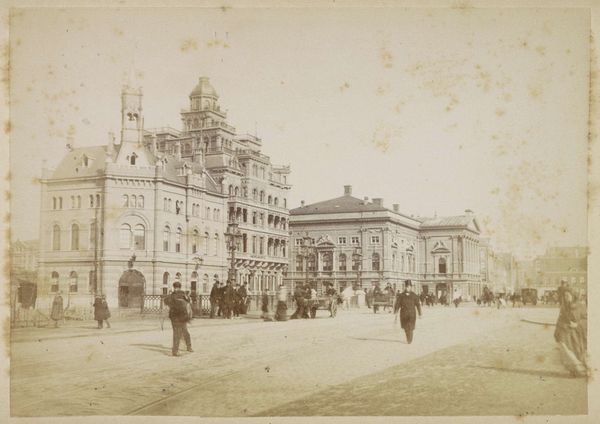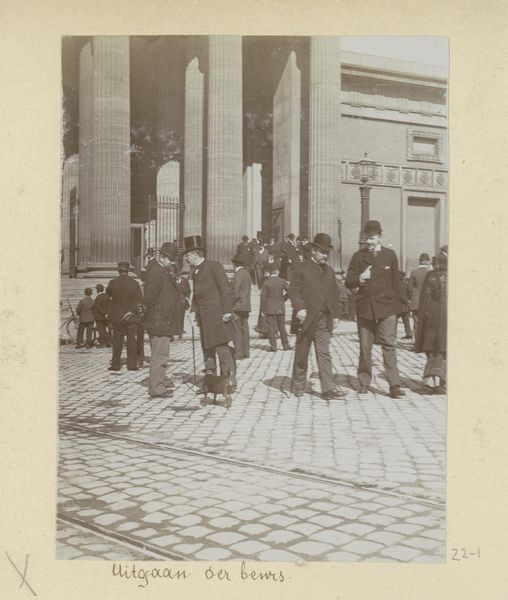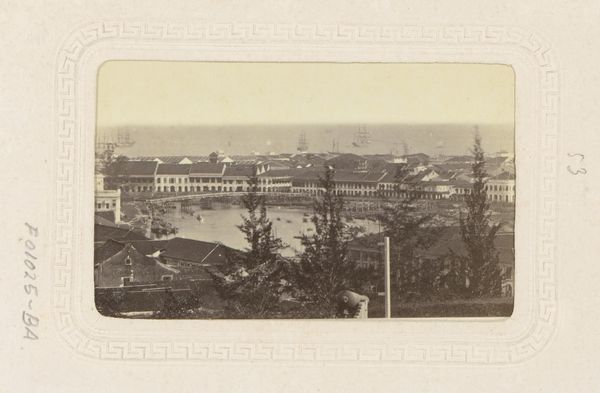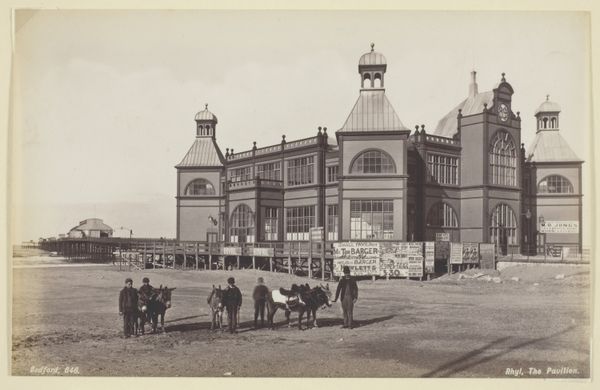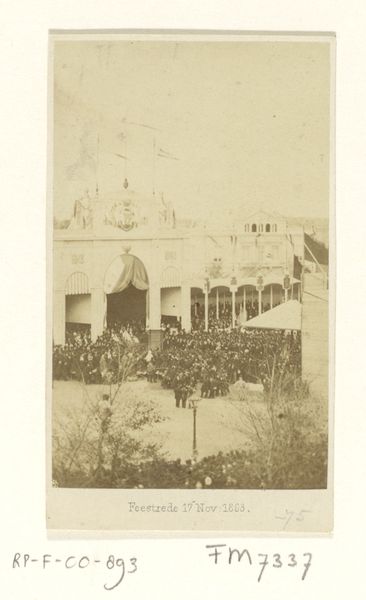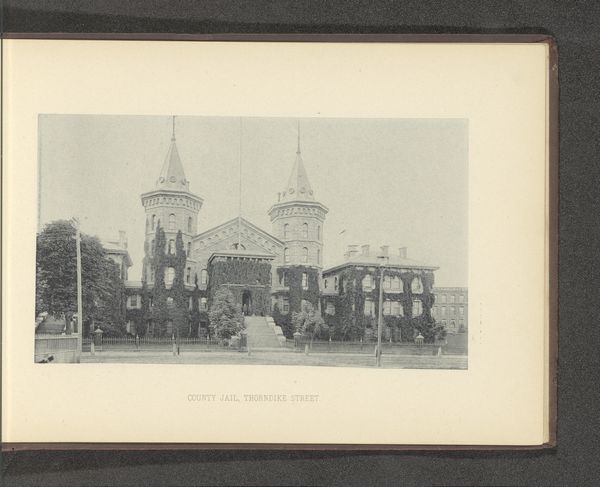
Gezicht op het Kurhaus in Scheveningen met op de voorgrond mensen en strandstoelen after 1884
0:00
0:00
photography, gelatin-silver-print
#
pictorialism
#
landscape
#
photography
#
gelatin-silver-print
#
cityscape
#
genre-painting
#
realism
Dimensions: height 50 mm, width 80 mm
Copyright: Rijks Museum: Open Domain
Editor: We're looking at "Gezicht op het Kurhaus in Scheveningen met op de voorgrond mensen en strandstoelen," a gelatin-silver print, made after 1884 by Andries Jager. It has this faded, almost dreamlike quality. The architecture feels grand but the people in the foreground look a little lost. What do you see in this piece, that maybe I’m missing? Curator: What strikes me is the way this photograph captures a very specific moment in the development of leisure and social class. We see the Kurhaus, a symbol of opulent recreation, but who has access? Note how the subjects are arranged and consider how gender and social status may be coded in the image. Does everyone on the beach feel free and unburdened? Editor: I see what you mean. There's a formality to the people, despite being at the beach. It’s not the kind of carefree beach day we might imagine today. Those figures look like they have things on their minds, more like a promenade than a relaxation scene. Curator: Precisely. It makes me think about whose stories get told and remembered in images like these. Are we looking at a document of a bygone era, or does it reflect the complexities of privilege and exclusion that are still relevant today? Editor: It’s fascinating to think about how a seemingly simple photograph can open up these larger conversations. It pushes me to look beyond the surface. Curator: Exactly! And perhaps this is why studying history helps us better understand both the present and visual legacies of our past. Editor: Thanks for making me look at this piece in an intersectional context; it makes me want to understand the socio-historical nuances of what I'm viewing more deeply!
Comments
No comments
Be the first to comment and join the conversation on the ultimate creative platform.
